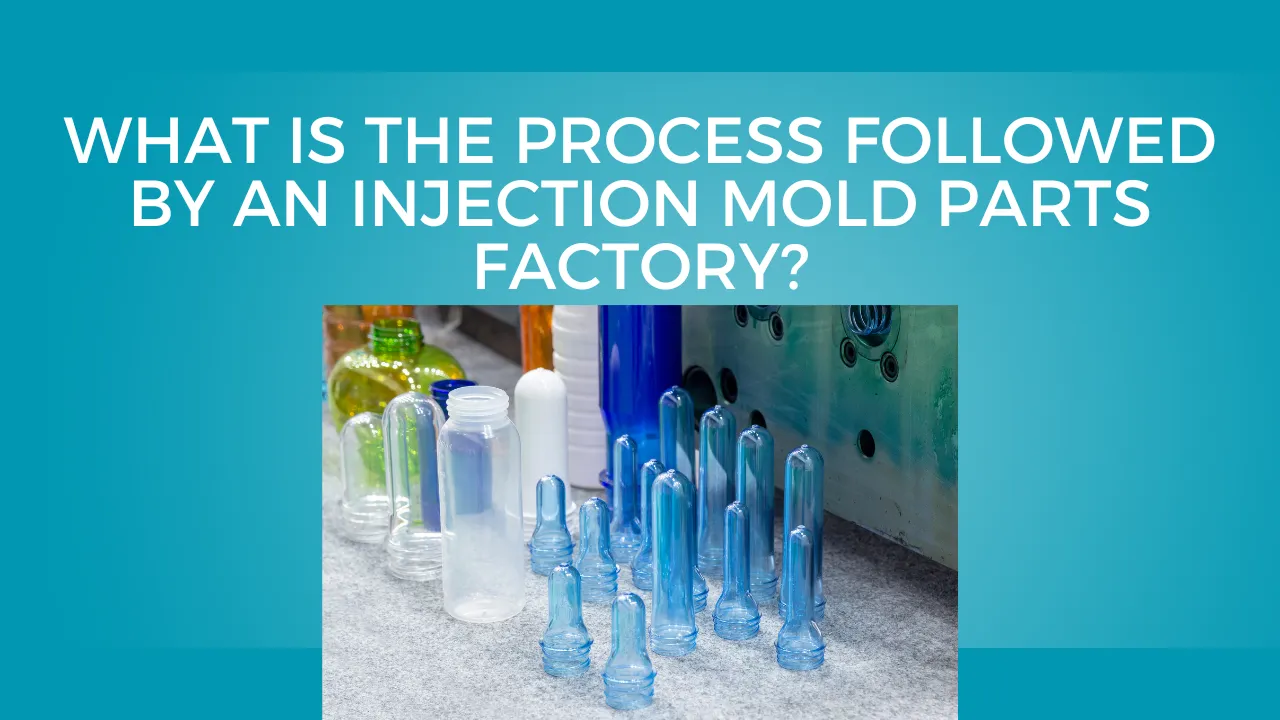When it comes to modern manufacturing, injection molding is one of the most widely used methods to produce durable and precise components. If you’ve ever wondered how the plastic parts in your daily life—from car interiors to household appliances—are created, the answer often lies in the specialized work done at an injection mold parts factory. Having worked closely with suppliers and manufacturers, I’ve had the chance to see this fascinating process in action, and it’s far more sophisticated than many people realize.
In this article, I’ll walk you through the entire journey of how an injection mold parts factory operates, from concept design to final quality inspection. I’ll also highlight how a plastic mold parts manufacturer ensures precision, efficiency, and consistency in every product.
Understanding Injection Molding in Simple Terms
At its core, injection molding is a process where melted plastic is injected into a mold cavity under high pressure, cooled down, and then ejected as a solid part. The advantage of this method is speed, precision, and scalability. Once the mold is ready, it can produce thousands—or even millions—of identical components with minimal variation.
For an injection mold parts factory, this is not just about producing parts but also about optimizing every stage of the process to achieve high-quality results at competitive costs.
Step 1: Product Design and Concept Development
The first stage always starts with the product idea. A client approaches a plastic mold parts manufacturer with a requirement—this could be anything from an automotive component to a medical device part. Engineers then work on creating 3D models and prototypes using CAD (Computer-Aided Design) software.
Design is crucial because the mold needs to account for shrinkage, stress points, and cooling times. A small error at this stage could result in defective parts later, so the factory team ensures every detail is meticulously checked before moving forward.
Step 2: Mold Tooling and Fabrication
Once the product design is finalized, the next step is creating the actual mold. This mold is usually made from hardened steel or aluminum, depending on the expected production volume.
An injection mold parts factory invests heavily in tooling because the mold itself is the backbone of the entire operation. Precision CNC machines, EDM (Electrical Discharge Machining), and polishing equipment are used to carve the mold cavities.
This stage often takes the most time and cost because once the mold is complete, it can be reused thousands of times. For a plastic mold parts manufacturer, high-quality tooling is essential to avoid downtime, rework, or product inconsistencies.
Step 3: Material Selection and Preparation
Choosing the right type of plastic is another critical step. Thermoplastics like ABS, polypropylene, and nylon are some of the most common choices. Each plastic has different melting points, strength, flexibility, and durability.
The injection mold parts factory team carefully selects the plastic based on the client’s requirements—whether it needs to withstand heat, resist impact, or remain lightweight. The raw plastic material usually comes in pellet form, which is dried and pre-treated before entering the injection molding machine.
Step 4: Injection Molding Process
Now comes the heart of the operation. The injection molding machine consists of three main parts: the hopper, the heated barrel, and the mold.
-
Plastic pellets are fed into the hopper.
-
The material is heated and melted inside the barrel.
-
The molten plastic is injected into the mold cavity under high pressure.
-
The plastic cools and solidifies inside the mold.
-
The mold opens, and the finished part is ejected.
What’s impressive about a professional plastic mold parts manufacturer is how efficiently they manage this process. Advanced machines can produce hundreds of parts in a single cycle, all while maintaining tight tolerances.
Step 5: Cooling and Ejection
Once the plastic has been injected, cooling begins almost instantly. Cooling time is one of the most important factors in the cycle because it directly affects production speed and part quality.
The injection mold parts factory typically uses cooling channels inside the mold to ensure even and rapid cooling. After the part solidifies, ejector pins push the part out of the mold carefully to prevent damage.
Step 6: Trimming and Finishing
Even though the parts come out of the mold fully formed, they often need finishing. This can include trimming excess plastic (known as flash), polishing surfaces, or applying coatings for aesthetics or durability.
A good plastic mold parts manufacturer invests in post-production finishing because even small imperfections can impact the product’s usability or appearance. For example, automotive interior components must be flawless to meet industry standards.
Step 7: Quality Inspection and Testing
Quality control is a non-negotiable step. Factories conduct strict inspections at multiple stages to ensure every part meets specifications. This includes dimensional checks, stress testing, and surface inspections.
An injection mold parts factory often uses advanced testing equipment such as coordinate measuring machines (CMMs) to ensure accuracy. In industries like medical devices or aerospace, even the smallest defect can have serious consequences, so reliability is everything.
Step 8: Assembly and Packaging
If the part is a component of a larger product, it might go through assembly lines where multiple parts are joined. Otherwise, the parts are cleaned, labeled, and packaged for shipment.
A plastic mold parts manufacturer ensures that the packaging protects products during transport, especially when shipping internationally. Many also follow eco-friendly packaging practices to reduce environmental impact.
Real-World Example: Automotive Components
One of the most impressive applications I’ve seen was at a factory producing dashboard panels for cars. The precision required was astonishing—the slightest flaw would make the component unusable. The injection mold parts factory not only managed large-scale production but also ensured every panel looked identical in finish, strength, and fit.
This real-world application shows why clients rely on professional plastic mold parts manufacturers to deliver consistent quality that can withstand the demands of everyday use.
Why This Process Matters to Clients
From the outside, it might look like injection molding is just about making plastic parts quickly. But when you break down the steps, you see how much thought, engineering, and quality control go into every stage.
For businesses, working with a reliable injection mold parts factory means faster production, lower costs, and dependable quality. For consumers, it means durable products that perform as expected, whether it’s a smartphone case or a car component.
Final Thoughts
The process followed by an injection mold parts factory is a fascinating blend of engineering, technology, and precision. From designing the mold to ensuring each part meets the highest quality standards, every step is carefully executed.
A trustworthy plastic mold parts manufacturer not only provides cost-effective solutions but also ensures that products are reliable, safe, and consistent. So the next time you pick up a plastic product, you’ll have a deeper appreciation for the complex process that brought it into your hands.









